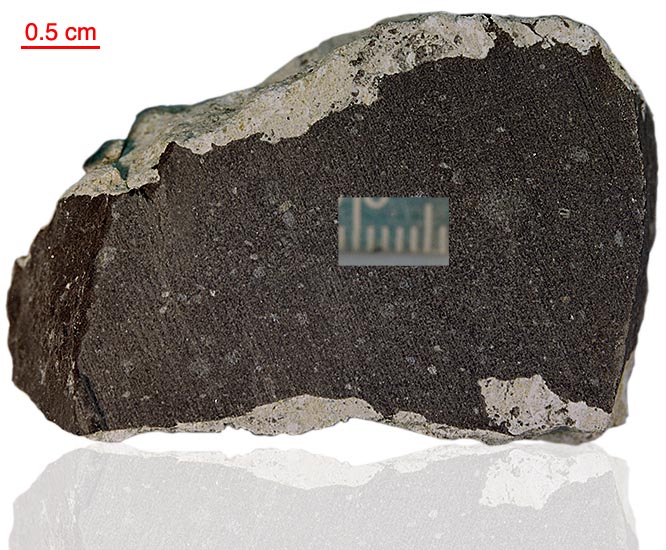
Fact sheet
77215 is probably a brecciated pigeonite-anorthite cumulate, but the small size of the remnant lithic clasts prevents any certain determination of cumulate origin. The pigeonite has inverted to orthopyroxene with augite exsolution. The presence of undevitrified noritic glass in 77215 is significant to understanding its thermal history. 77215 broke up into many pieces on the way back from the moon. Some pieces have small areas of unbrecciated norite with primary igneous texture. However, most of the lithic clasts in 77215 have been intensely granulated or smeared out to form schlieren, so that the relict host rock(s) are only represented by very small clasts. 77215 is approximately 41% orthopyroxene and 54% plagioclase with trace amounts of troilite, metallic iron, ilmenite, clinopyroxene, spinel, silica, K-feldspar, and other trace phases.
The sample weighed 846.4 grams before analysis and has been dated at 3.96±0.03 billion years (Ar/Ar).
Further details of this and other Apollo samples are here: http://curator.jsc.nasa.gov/lunar/
Apollo 17, the final manned landing mission, had two objectives: to obtain samples of ancient rocks from the lunar highlands and to look for evidence of younger volcanic activity on the valley floor.
This small Collection contains material deriving from both periods, including igneous rocks around 4.3 billion years old from the lunar highlands as well as younger volcanic samples dating from about 3.6 billion years ago.
Apollo 17 was launched on 7 December 1972.






